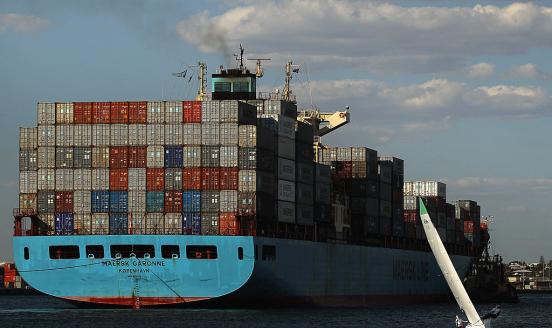The great Franco-German divide
One of the features of the German socio-economic model is its vitality in terms of exports. In this respect it contrasts sharply with France. In 2000, German and French goods exports amounted to respectively 8.7 and 7.5 percent of world trade. Ten years later France's share of global trade was barely 3.4 percent. It would be tempting to ascribe this decline to the rise of China, which in the meantime advanced from seventh to first position in the export league. But then how can we explain that Germany managed to preserve its share almost unchanged?
Another way to compare countries' export performance is to compute their ratio to gross domestic product (GDP). In 2000, German and French goods exports amounted to respectively 29 and 25 per cent of their GDP, ie a gap of only 4 percentage points. Ten years later the export/GDP ratio for Germany had increased to 41 percent, but had dropped to 22 percent for France, ie a whopping gap of 19 points. The increase in this gap results from two complementary factors. First, there has been a substantial relative decline in French manufacturing. France has seen the share of its GDP generated by services increase rapidly, whereas this remained constant and at a much lower level in Germany. Second, within the goods sector, both countries have witnessed an increase in their export share, but the pace has been much faster in Germany than in France.
Obviously there is no single cause behind such complex developments. Differences between the two countries in industrial structure – be it in terms of sectors or of organisation (such as the role of the Mittelstand) – are obviously important and are nothing new. What is recent, however, is the determination of German industrial firms to fragment their production processes internationally, by moving tasks that require relatively low-skill labour to lower wage countries such as the eastern EU member states, and by concentrating in Germany the higher added-value tasks that are made more competitive thanks to the international fragmentation process. By contrast in France such “délocalisations” are generally regarded as politically and socially unacceptable. One reason for this difference in attitude towards international fragmentation is the French social model, which features less professional education and training, less social dialogue and less flexibility than Germany's. If it wants to retain a competitive industrial sector and close the export divide with Germany, France should rethink its social model. This would be much more effective than a policy to encourage domestic consumers to “buy French”.
A version of this column was also published in the French magazine L’Expansion.



